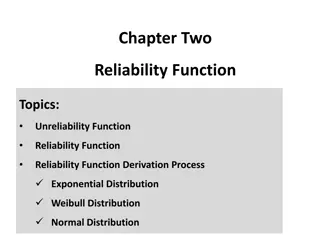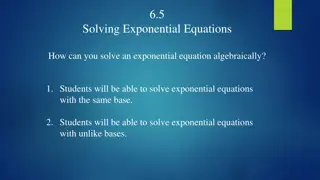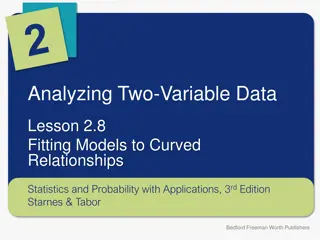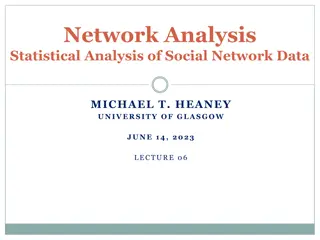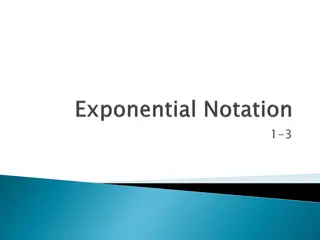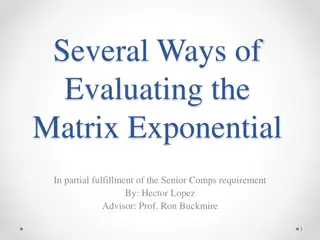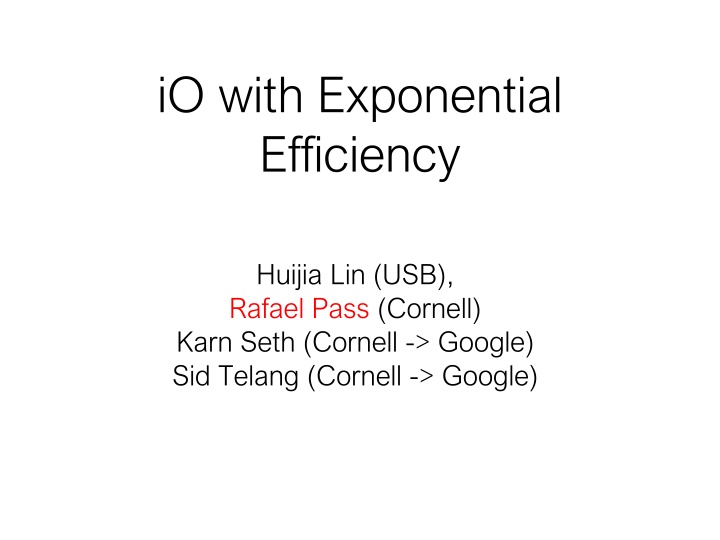
Exploring Efficient iO and Its Applications
Delve into the world of efficient indistinguishability obfuscation (iO) and its plethora of applications, examining the potential for identifying qualitatively weaker notions that suffice for various uses. Explore the efficiency and challenges of iO constructions based on multilinear maps, and consider the implications of slightly nontrivial obfuscation.
Download Presentation

Please find below an Image/Link to download the presentation.
The content on the website is provided AS IS for your information and personal use only. It may not be sold, licensed, or shared on other websites without obtaining consent from the author. If you encounter any issues during the download, it is possible that the publisher has removed the file from their server.
You are allowed to download the files provided on this website for personal or commercial use, subject to the condition that they are used lawfully. All files are the property of their respective owners.
The content on the website is provided AS IS for your information and personal use only. It may not be sold, licensed, or shared on other websites without obtaining consent from the author.
E N D
Presentation Transcript
iO with Exponential Efficiency Huijia Lin (USB), Rafael Pass (Cornell) Karn Seth (Cornell -> Google) Sid Telang (Cornell -> Google)
IO Plethora of Applications For example: SW14, BCP14, BZ14, GGHR14, BGL+15, CHJV14, KLW14 May plausibly exist Candidates: GGH+13b, BR 13, BGK+13, PST14, GLSW14 Avoids impossibility results for stronger notions e.g., those of BGI+01, GK05, CKP15, PS15, MMN15, LPST15
IO However: All concrete constructions based on multilinear maps [GGH13a, CLT13, GGH15, CLT15] All MLM constructions have nontrivial attacks [CHL+15, MF15, ]
Can we identify qualitatively weaker notions that suffice for applications? E.g., Compact FE -> iO [AJ15,BV15] Today: Today: XiO XiO ( (iO iO with with exponential efficiency ) exponential efficiency ) May plausibly exists unconditionally May plausibly exists unconditionally
Recap: IO C1 = C2
Recap: IO C1 iO = iO C2
Recap: IO C1 iO(C1) iO = iO C2 iO(C2)
Inefficient iO C iO(C)
Inefficient iO n = input length C iO(C) Time to obfuscate = poly( , |C|) * 2n Size of obfuscation = poly( , |C|) * 2n
Inefficient iO x C(x) 11011 01010 11111 11000 00000 01010 11100 00111 000 001 010 011 100 101 110 111 Trivial C Time to obfuscate = poly( , |C|) * 2n Size of obfuscation = poly( , |C|) * 2n
Inefficient iO slightly nontrivial C iO(C) Time to obfuscate = poly( , |C|) * 2n Size of obfuscation = poly( , |C|) * 2n(1- ) for < 1
Inefficient iO slightly nontrivial C iO(C) Time to obfuscate = poly( , |C|, 2n) Size of obfuscation = poly( , |C|) * 2n(1- ) for < 1
Exponentially Efficient iO (XiO) slightly nontrivial C iO(C) Time to obfuscate = poly( , |C|, 2n) Size of obfuscation = poly( , |C|) * 2n(1- ) for < 1
YES YES Is XiO useful? d dunno unno.. .. Can perfect/statistical perfect/statistical XiO exist?
Function Compression [Kabanets and Kolokolova 13] You get black-box access to a function {0,1}n->{0,1} You can run in time poly(2 poly(2n n) ) Need to output a description of length poly(C) * 2n(1- ) XiO can be viewed as Function compression with witness
Theorem: Assume the existence of XiO XiO for for circuits with circuits with short inputs short inputs and the hardness of LWE, both with subexponential security. Then, there exists standard iO standard iO for circuits.
Proof Outline Proof Outline XiO + LWE -> short-cipertext FE short-ciphertext FE + LWE -> iO [LPST 15]
Functional Encryption Enc(x): x C skC: C(x) Dec(skC, Enc(x)):
Functional Encryption If C(m0) = C(m1) m1 m0 C C
Non-Compact Enc time polynomial in circuit size m C
Compact/Sublinear [AJ 15,BV 15] Enc time polylog/subliner in circuit size time only m C Thm Thm [AJ 15,BV 15]: SubExp Secure Sublinear FE -> iO
Short FE [LPST15] Length Length of ciphertext sublinear in circuit size m |Enc(m)| = poly( ,|m|) * |C|1- for >0 C Thm Thm [LPST 15]: SubExp Secure Short FE + LWE -> iO
Succinct [GKP+14] Depends only polylogarithmically on circuit size m (But only works for circuits with 1-bit output) C Thm Thm [GKP+ 14,GVW 13]: LWE -> Succinct FE
Goal m m XiO C C Succinct FE Short FE
Idea m, i Encrypt pairs (m,i) C
Idea m, i Encrypt pairs (m,i) Change to C such that C (m, i) = yi, the ith C output bit of C(m)
Idea m, 1 m, t Now, to encrypt m, instead encrypt all pairs (m,i) for 1 i t C
Idea m, 1 m, t Now, to encrypt m, instead encrypt all pairs (m,i) for 1 i t C To decrypt, apply skC to each, and combine results y0 y1 yt y =
Problem Not sublinear m, 1 m, t C y0 y1 yt y =
Problem Not sublinear m, 1 m, t Ciphertext grows linearly with t, the number of output bits of C, which is not sublinear in |C|. C y0 y1 yt y =
Problem Not sublinear m, 1 m, t Ciphertext grows linearly with t, the number of output bits of C, which is not sublinear in |C|. C Need to compress ciphertext y0 y1 yt y =
Solution i Instead of a ciphertext, release a circuit G[K,m] that, on input i, generates Enc(m,i) G[K,m] m, i
Solution i Instead of a ciphertext, release a circuit G[K,m] that, on input i, generates Enc(m,i) G[K,m] Use PRF(K,i) as encryption randomness. m, i
Solution i As a ciphertext: release a circuit G[K,m] that, on input i, generates Enc(m,i). G[K,m] Use PRF(K,i) as encryption randomness. Obfuscate the circuit using XiO to hide K and m. m, i
Sublinear |XiO(G[k,m])| = poly( , |G(k,m)|) * 2n(1- ) G[K,m] |G[K,m]| = (PRF evaluation + Encryption) = poly( , |m|)
Sublinear |XiO(G[k,m])| = poly( , |G(k,m)|) * 2n(1- ) G[K,m] |G[K,m]| = (PRF evaluation + Encryption) = poly( , |m|) Input length n = log t log |C|
Sublinear |XiO(G[k,m])| = poly( , |G(k,m)|) * 2n(1- ) G[K,m] |G[K,m]| = (PRF evaluation + Encryption) = poly( , |m|) Input length n = log t log |C|
Sublinear |XiO(G[k,m])| = poly( , |G(k,m)|) * 2n(1- ) poly( , m) * |C|(1- ) G[K,m] |G[K,m]| = (PRF evaluation + Encryption) = poly( , |m|) Input length n = log t log |C|
TODAY: TODAY: XiO + LWE -> short FE SubExp Secure short FE + LWE-> iO [LPST 15]
Theorem: Assume the existence of XiO XiO for for circuits with circuits with short inputs short inputs and the hardness of LWE, both with subexponential security. Then, there exists standard iO standard iO for circuits.
Conclusion: Getting non-trivial compression is what makes iO hard/interesting




